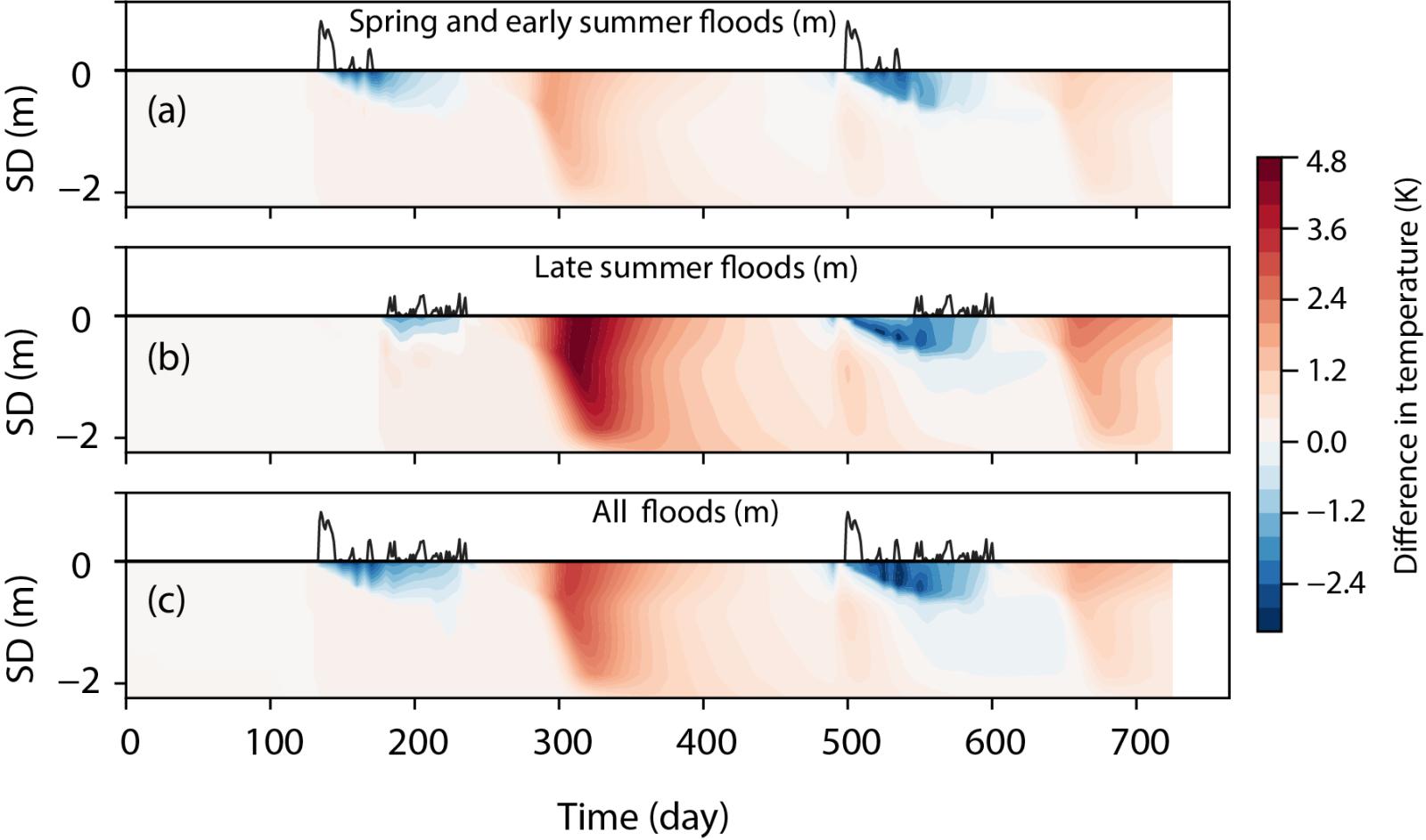The Thermal Response of Permafrost to Coastal Flooding
Permafrost degradation is observed to increase rapidly in Arctic coastal regions due to permafrost warming. Increases in air temperature is the primary direct driver of permafrost warming, but frequent coastal flooding has been recognized as another important driver indirectly contributing to permafrost warming by changing the surface reflectance of solar insolation, increasign subsurface soil moisture, and increasing soil thermal conductivity. However, the impact of coastal flooding on permafrost has not been tested and remains poorly understood. To address this knowledge gap, we used a combination of available flooding data on the Ikpikpuk delta and a numerical model to understand the flood impact on permafrost dynamics. We first constructed three most common flood events based on water level data on the Ikpikpuk: high snowmelt flood in the late spring and early summer, middle and late summer floods, and floods through the whole spring and summer. The impact of these floods on permafrost was simulated on coastal permafrost landscape using the Advanced Terrestrial Simulator (ATS model) that fully couples permafrost-hydrology and thermal dynamic processes. From our 30 years of simulations, we found that coastal floods have important impact on coastal permafrost dynamics. It leads to a cooler surficial soil due to the increase of latent heat of thawing and evaporation of the wetter surficial soil. The cooling effect may be intensified if the floods return in the second year due to the carry-over cooling effect of floods from the first year. Conversely, floods facilitate heat penetration to deeper soil zone with the increased thermal conductivity in the wetter soil. This warming effect is more significant in the first flooding year, but continues in the subsequent years with a relatively slower warming speed. The timing of floods is a key factor controlling the flood effect. The middle and late summer floods cause the deepest thaw depth in the first year, compared with the other two floods scenarios because it accompany with the warmest air temperature and warmest antecedent soil temperature. Our study improved the understanding of coastal permafrost thaw mechanism and highlighted the importance of protecting coastal permafrost landscapes and coastal community against coastal flooding.

